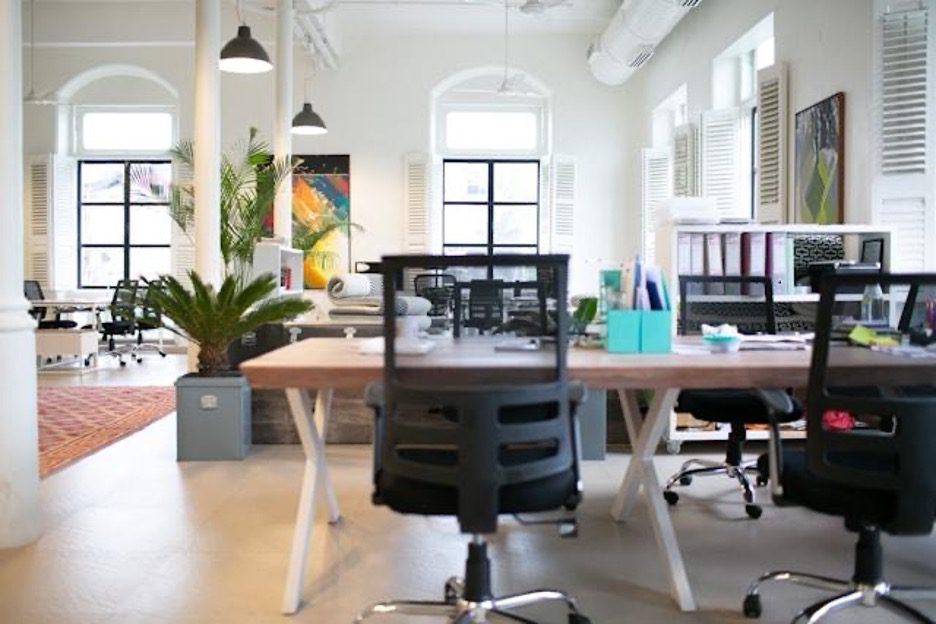For entrepreneurs, remote workers, and commercial property owners, the work-from-home shift has shaken things up. Now it’s time to adapt, adjust, and ameliorate what ails us.
In the early days of the remote revolution, nearly everyone was jumping for joy. All-day pajamas, making lunch at home, more quality time with our pets, and sleep-ins. This was a nice change. Like sipping on that first happy hour martini, we could let loose a little despite the reality of the situation around us.
Whatever restrictions, changes, and discomforts we were facing as a society, they were all supposed to be temporary. In the meantime, we got to work from the comfort of home.
That was 2020. Fast-forward to today and things feel almost back to normal. No more face masks, and we can eat out in restaurants and go on vacations again. But not everything has gone back to how it was before. Where and how we work have been irrevocably changed, and not everyone is feeling good about it.
Home offices were a necessity during the pandemic, and they have now become the norm. When companies began increasing pressure for people to return to the office, employees made it clear that it was remote or nothing at all.
This permanent shift has affected three groups in different but interconnected ways: remote workers, commercial property owners, and entrepreneurs. These folks are having to manage quite the hangover, and the question remains how it can be done successfully.
If we focus on adaptation and meeting the new needs of a remote work culture, then anything, even better things, are possible. The cures for this remote work hangover are out there; we just need to know how to find them.
The Commercial Property Hangover
Work has long been a “place” you go, as well as a job you perform. But when you remove the requirement of place, a big industry presumably gets wiped off the map. This also causes a domino effect for other industries that have been built around workplaces.
According to an article in Fortune, landlords are having trouble finding tenants for office buildings, and property values have taken a nosedive. Even co-working spaces like WeWork are going through changes and downsizing because, when a physical space to work is no longer a requirement, how does commercial real estate adjust?
The Cure: Embrace Flexible Working Spaces
Offices have the opportunity to adapt to what workers want — flexibility. With many companies offering hybrid work structures, days spent at the office could more naturally reflect the hybrid space that the home office offers.
Spaces that are more community-focused will be in demand. Think moveable walls, flexible seating options, private and semi-private desks, good options for food and coffee, and even recreational space to relax. Offices should be places employees want to be. And right now, that looks more like home.
The Remote Worker Hangover
For employees, working at home is great for the first few months. But often, loneliness due to social isolation sets in. It highlights the important role of the workplace as a source of community.
The convenience of remote work puts the onus of socialization back on the employee. It’s up to remote workers to meet new people and make connections.
The Cure: Join a Co-Working Space
This is a great option for remote workers. Getting out of the house and having a place to go, whether it’s once a week or a few times a week, is good for your mental health. Many of these places have additional extracurricular activities like yoga and hiking on the weekends.
Another option is to plan meet-ups with local work colleagues. If your company is totally remote, it’s worth asking if they might consider a monthly stipend for meetups with colleagues or contribute to your co-working space costs. On average, companies save up to $11,000 per employee per year just through the hybrid model.
The Entrepreneurial Hangover
Entrepreneurs are people too, and they also need social interaction. The lack of community and disconnection from a team environment can make it difficult to authentically connect with your team, and it’s hard to get a read on the people who are supporting your organization.
The Cure: Engage in Regular Team Meetings and One-on-Ones
If you have a brick-and-mortar, set a day when your teams can meet in the office so you can be present for them. If you’re managing an international remote team, then do the same online. It’s important to let people know they are part of a team and they are supported. One-on-ones allow the opportunity for direct accolades, feedback, and face time with the boss.
The Future of Remote Work is Being Shaped Now
No matter which group you belong to, the questions facing us are the same. How do we navigate this future? Who do we communicate our wins and losses to? How and when do we vent our overwhelm?
Home has become a workplace, coffee shop, lunch spot, place of respite, and the therapist’s office. So, we have to be smart about boundaries so we’re not creating stress in our home environment, and more importantly, with those we inhabit that space with.
James Clear, the author of the book Atomic Habits, suggests creating a physical boundary. Even if you have a small apartment, he recommends allocating an area that’s reserved for working. This ensures that your head is where it needs to be during working hours, and when it’s time to disconnect, you change spaces.
There’s no single cure for remote work hangovers. We have to ride it out collectively and try everything until we see what works for our industry, our business, our employees, and ourselves. But one thing is certain. This is the future. And those who choose to ride the wave with an attitude of flexibility and innovation will come out on top.








